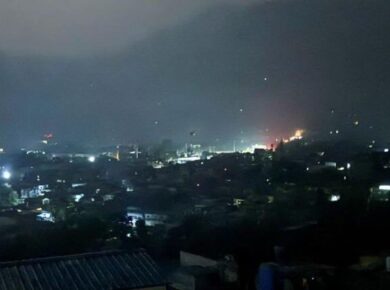Hydrosphere – Albedo, Fresh Water, Salinity & Temperature
Water on Earth
- 71% of earth surface constitutes water & only 29% constitutes land area of earth
- 97% of water area constitutes Oceans & Seas & 2.5% as fresh water
- 75% of fresh water in glaciers & ice caps
- 7% of fresh water as groundwater
- Fresh Water → Glaciers > Ground water > Ice & Snow > Lakes > soil moisture > atmosphere > Rivers
Albedo
-
- The fraction of Sun’s radiation reflected from a surface.
- Originated from the Latin word albus, meaning “white”.
- It is quantified as the proportion, or percentage of solar radiation of all wavelengths reflected by a body or surface to the amount incident upon it
Albedo → Fresh Snow > Ocean Ice > New Concrete > Desert Sand > Green Grass > Bare Soil > Deciduous Trees > Coniferous Trees > Worn Asphalt > Fresh Asphalt
Salinity of the Ocean
-
- All sea water contains large amounts of dissolved mineral matter of which NaCl constitutes more than 77%
- The other important minerals include magnesium, calcium & potassium along with others
- Due to free movement of ocean water, the proportion of different salts, remain remarkably constant in all oceans & even to great depths
- But the degree of concentration of salt solution does vary appreciably in different areas, expressed as salinity
- The average salinity of the oceans is approx. 35 PPT with variations shown in salinity distribution maps as isohalines, lines joining places having equal degree of salinity.
- Degree of salinity in various oceans & seas is affected mainly by
- the rate of evaporation
- amount of fresh water added by precipitation
- streams & icebergs
- degree of water mixing by currents
- Average salinity of sea water is 35 gm in 1 kg of water with order of salts is as Nacl > Mgcl2 > MgSO4 > CaSO4 > CaCO3 > MgBr2
- Highest salinity is found at Tropic of cancer & Tropic of Capricorn due to active evaporation, owing to clear skies, high temp. & steady trade winds
- From the Tropics, salinity decreases both towards poles & Equator
- Salinity increases with depth of the sea & increases rapidly after Halocline
- Top 3 Saline Water Bodies → Van Lake, Turkey (330) > Dead Sea, Turkey (240) > Great Salt lake, US (220)
Temperature of Ocean Water
- Like land masses, ocean water varies in temperature from place to place both at the surface & at great depths
- Since water warms up & cools down much more slowly than the land, the annual range of temperature in any part of the ocean is very smaller
Thermocline
- A boundary region in oceans, from where, rapid decrease in temperature starts generally at 0*C
- 90 % of the water is below this region
- Generally there are 3 layers in an ocean viz.
- 1st layer is until ~500 m deep
- 2nd layer is from ~500 ~ 4500 m (Thermocline layer)
- 3rd layer is till oceanic floor
- At Arctic & Antarctic Circle, we have only 1 such layer as surface temp. itself is 0*C with very slight change in temp.
Generally, the mean annual temperature of oceans decrease from equatorial areas towards the poles, but the reduction of temperature with latitude is never constant, because of the interference by warm & cold currents, winds and air masses














2 comments
thankyou very much to share the knowledge.
Top 3 Saline Water Bodies → Van Lake, Turkey (330) > Dead Sea, Turkey (240) > Great Salt lake, US (220)
correct this update website it would be good.
433 Gaet’ale Pond salt lake Ethiopia
400 Lake Retba salt lake Senegal
350 Lake Vanda salt lake Antarctica
350 Garabogazköl lagoon Turkmenistan
348 Lake Assal salt lake Djibouti